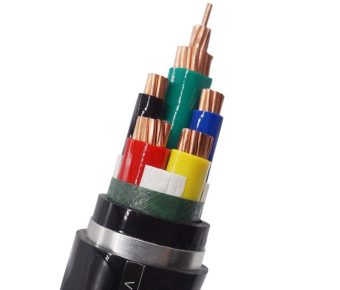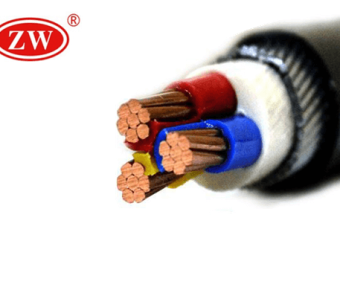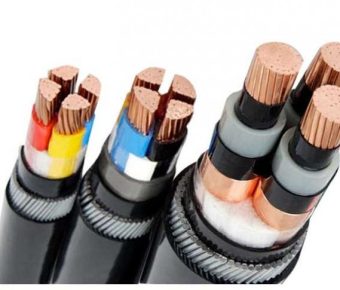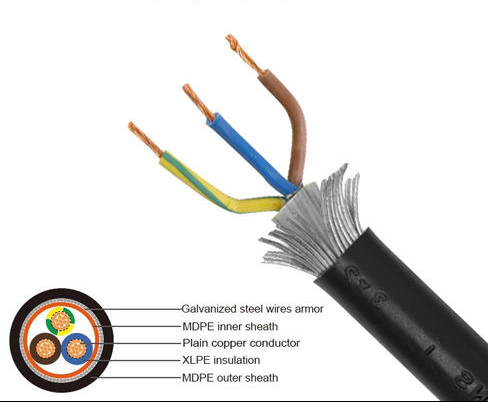- Leading Cable and Wire Manufacturer-ZW
- 6mm swa cable
6mm swa cable
- According to IEC and GB Standard
- XLPE Insulation
- Approved by SGS, CCC, ISO, CE
- 0.6/1KV
6mm SWA Cable: 5 Critical Details You Need To Be Acquainted
Do you intend to carry out some underground power installations? A 6mm SWA cable is undoubtedly your best bet. Do you know anything about this type of electrical cable? It is suitable for a wide selection of underground applications, including cable networks, power networks, and outdoor connections. Unfortunately, a considerable proportion of people know little or nothing about the 6mm steel wire armoured cable. Considering that it comes in handy across several typical wiring applications, don’t you think you should be acquainted with this electrical wire?
Generally, SWA stands for a Steel Wire Armour. A steel wire armoured cable is the most suitable option when dealing with harsh conditions. It has a robust protective layer that protects the inner wires from potential damages caused by extreme conditions. Essentially, an SWA electrical cable can withstand harsh conditions for an extended time. Thus, you would be wise to use it for your underground applications, especially if you want to minimize wiring repair expenses.
You can easily buy an SWA cable and avoid inconveniences associated with constant wiring repairs. However, it is essential to note that there are several types of wires, and there is no one-fits-all cable. It is challenging to choose an appropriate 6mm SWA cable because there are several factors that you have to consider. Fortunately, this article outlines the most critical details that you need to know when selecting this type of wire.
1.What is a 6mm SWA Cable?
As the name suggests, a 6mm SWA wire falls within the category of Steel Wire Armoured cables. What exactly is an SWA cable? Generally, SWA cables are power and auxiliary cables that are often used in mains supply electricity. These types of cables have copper conductors and heightened mechanical protection.
Unlike most electrical cables, the outer part of any SWA cable is reinforced with steel wire armouring, XLPE insulation, and PVC bedding. All the features mentioned work together to enable this type of electrical cable to withstand a wide array of external adversities. Consequently, an SWA cable is ideally suited for external wiring applications. There are several categories of SWA cables, often denoted by their wire sizes. A 6mm SWA cable is an excellent example of a commonly used steel wire armoured cable. What does the 6mm in this type of cable mean?
Well, 6mm denotes the cross-sectional area of the individual copper conductor that makes up the cable. Each conductor size is best suited for certain specific applications. A 6mm Steel Wire Armoured is suitable for a wide array of underground wiring applications. However, you have to note that this type of cable occurs in several cable cores.
A cable core signifies the number of conductors in a particular cable. For instance, 3 core 6mm steel wire armoured cable comprises three conductors: live, neutral, and earth. Each cable core is fit for a specific application. Thus, it would best to consult your local 6mm SWA cable expert before selecting an appropriate cable.
2.What is a 6mm cable used for?
Generally, different electrical wire sizes have distinct uses owing to variations in their current carrying capacity. A 6mm cable cannot function effectively as a 10mm SWA cable works in specific applications. Some people will opt to buy a particular SWA cable just because it’s affordable rather than considering its recommended uses.
As I mentioned earlier, a 6mm SWA cable comes in different variations suitable for specific applications. Unfortunately, most people consider the 6mm SWA cable price rather than its ideal applications. If you are one of those people, you should stop that habit because it is more costly in the long run.
Generally, a 6mm steel wire armoured cable is ideal for use in underground installations and mains electricity supply. Still, you need to consider that different forms of the 6mm cable serve various purposes. It would help to seek advice from a professional regarding the type of cable that will suit your specific needs.
3.How many Amps can a 6mm SWA Cable take?
Generally, a cable’s size determines the amount of current that it can carry without any damage. So, how much current can an SWA electrical cable with a 6mm conductor size carry? A cable’s size is not the only factor determining the amount of current that a particular wire can take.
Several other factors determine the amount of amperes that a particular cable can be able to carry. The most notable elements include the ambient temperature, the conductor number, and the installation conditions. Consequently, there is no definitive amount of amperes that a 6mm SWA cable can take.
The 6mm SWA cable current rating may vary depending on the ambient temperature and the conductor number. For instance, a 3 core SWA cable has a current rating of 53 amperes. However, it is essential to note that this figure changes depending on several other factors, including its length. As the length of a wire increases, its resistance also increases, affecting its current carrying capacity.
The amount of amperes that a 6mm armoured cable 25 m can carry cannot be similar to that of a 1-meter wire with identical features. Essentially, it is difficult to accurately determine the amount of amperes that a specific 6mm SWA cable can carry. If you are not a trained electrician, it would be best to consult your local electrical wire expert.
4.What diameter is a 6mm SWA cable?
Generally speaking, the amount of electric current that a particular cable can carry rises with each increase in its diameter. Most people often mistakenly assume that a cable’s cross-sectional area is equivalent to its diameter. A 6mm SWA cable diameter refers to its linear measure, whereas its cross-section represents its area. Essentially, these two units of measurement are not similar at all.
Cable diameter is denoted in millimetres, whereas its cross-sectional area is designated in millimetres square. So, the diameter of a 6mm steel wire armoured cable is 6 millimetres. To avoid any confusion regarding the cable’s diameter and cross-sectional area, you should consult a trained electrical wire expert.
5.How do I know what size of armoured cable I need?
As I indicated earlier, there is no one-size-fits-all SWA armoured cable. The appropriate size of the wire is entirely dependent on your intended application. The main factors that you need to consider when choosing an ideal cable size include;
- The voltage required for your specific application
- The length of cable you have to use
- The number of conductors in the cable
- The ambient temperature in the installation zone
It is important to note that you don’t necessarily have to limit yourself to a 6mm steel wire armoured cable. Several other SWA cable sizes could suit your specific needs. If you find it challenging to select the most appropriate size, you should seek some expert help. Apart from the 6mm SWA cable, the most commonly used SWA cables include;
- 2.5mm armoured cable
- 4mm SWA cable
- 10mm SWA cable
- 16mm SWA cable
- 25mm SWA cable
- 35mm SWA cable




